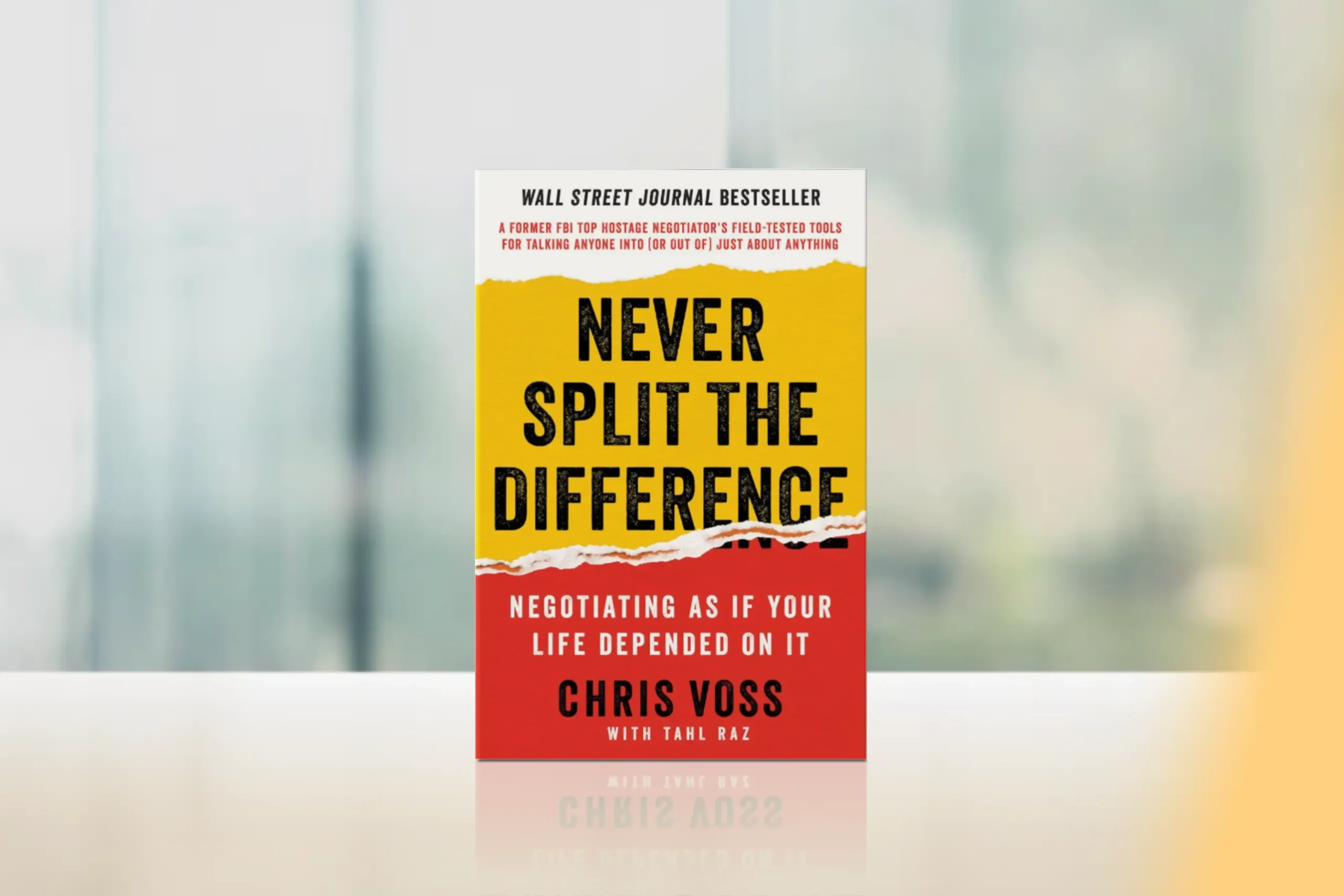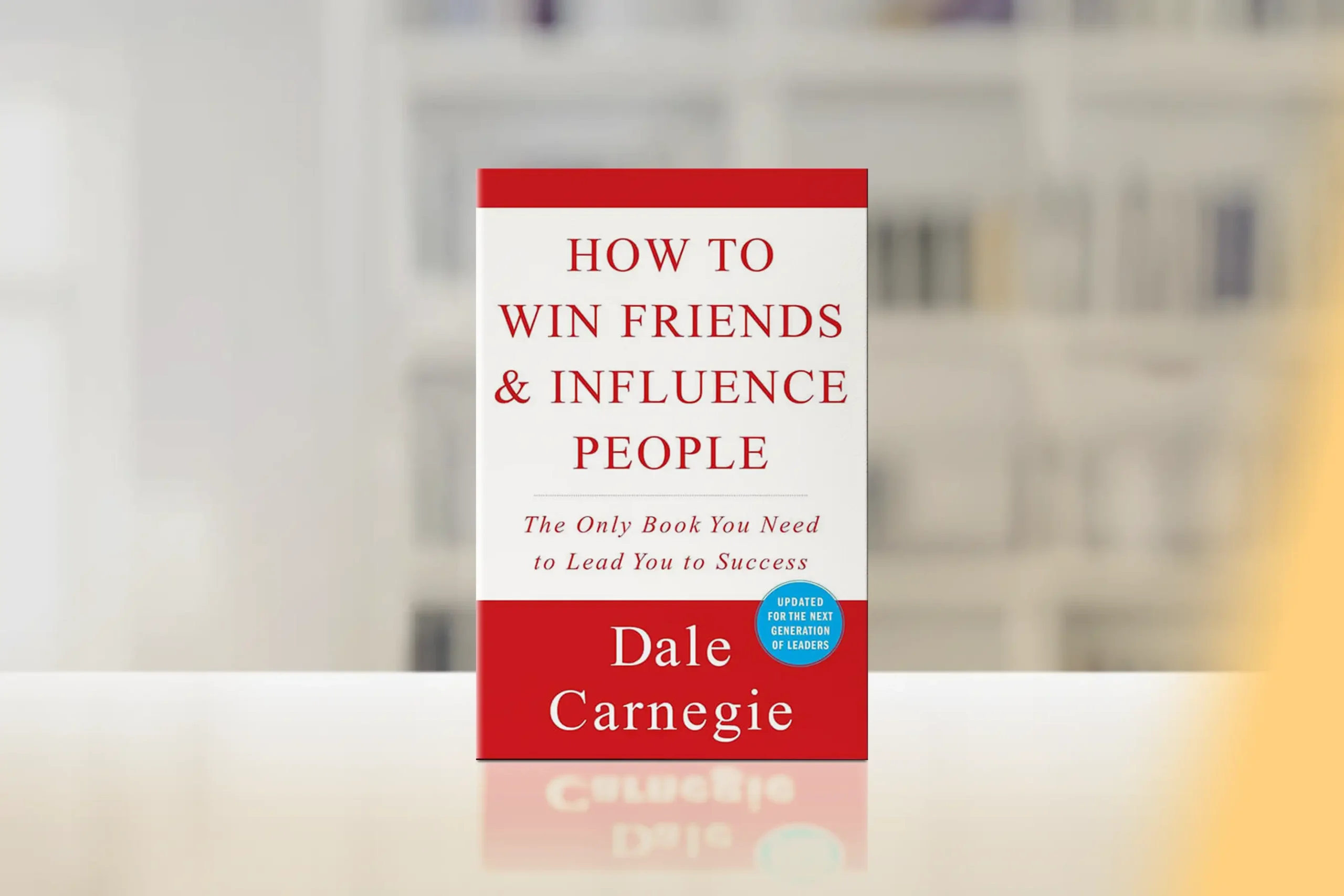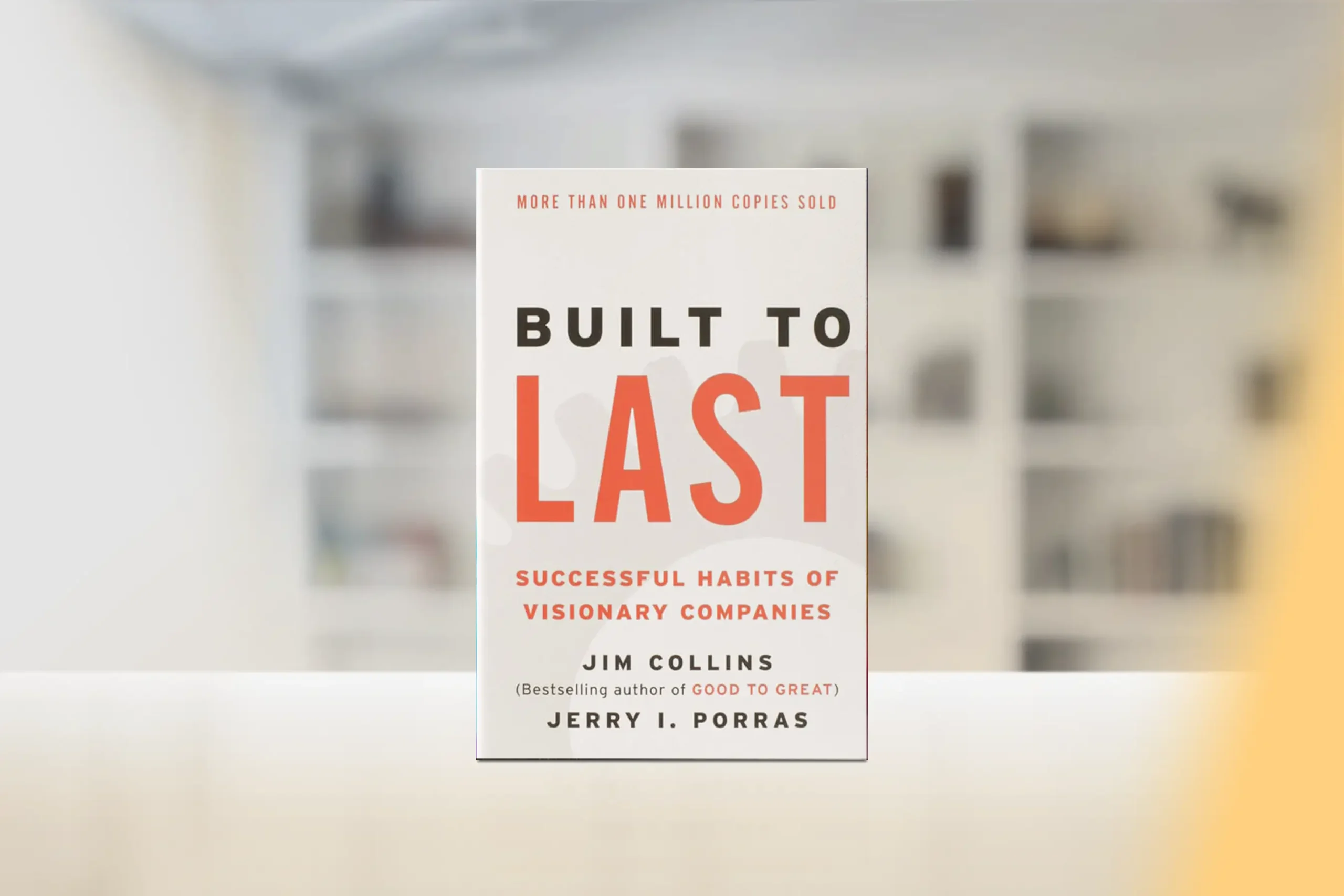Former FBI hostage negotiator Chris Voss transforms high-stakes negotiation strategies into powerful tools for everyday life in this groundbreaking book.
Published in 2016, “Never Split the Difference” revolutionizes traditional approaches to negotiation by emphasizing emotional intelligence and psychological tactics over conventional win-win solutions.
Drawing from his experience in life-or-death negotiations, Voss presents a compelling framework that anyone can use to become more persuasive in both professional and personal situations.
Core Concepts
“Never Split the Difference” methodology centers on tactical empathy and emotional intelligence, challenging the traditional rational approach to negotiation. Voss introduces several key techniques:
- Tactical Empathy: Understanding and leveraging emotional dynamics
- Calibrated Questions: Using specific “how” and “what” questions to guide conversations
- Mirroring: Repeating the last few words spoken by your counterpart
- Labeling: Identifying and articulating emotions to create trust
- The Black Swan Rule: Finding and using unknown pieces of information that change everything
These concepts are designed to help you understand the true motivations behind any negotiation and achieve better outcomes through emotional connection rather than logical argumentation.
Chapter-by-Chapter Review
The New Rules
In “Never Split the Difference”, Chris Voss challenges traditional negotiation methods, which often rely on logic and compromise. He introduces tactical empathy, showing that understanding and influencing emotions is far more effective than splitting differences. Negotiation, he argues, is about shaping outcomes through human connection.
Be a Mirror
This chapter highlights the effectiveness of mirroring—repeating the last few words your counterpart says. It encourages them to open up, share details, and feel understood. Combined with active listening, mirroring builds trust and provides leverage in negotiations.
Don’t Feel Their Pain, Label It
Voss explores emotional labeling—naming the feelings your counterpart may have. Labeling diffuses tension, validates concerns, and creates safety. By shifting conversations from conflict to cooperation, negotiators build stronger relationships.
Beware “Yes” – Master “No”
Chasing “yes” is often deceptive, as people agree superficially to avoid discomfort. Instead, Voss reframes “no” as the true start of meaningful negotiation. Respecting “no” gives autonomy and opens the door to honest dialogue.
Trigger the Two Words That Transform Any Negotiation
Voss shows why hearing “that’s right” is a breakthrough moment. Unlike “you’re right,” which signals disengagement, “that’s right” means genuine alignment and acknowledgment, creating momentum toward cooperation.
Bend Their Reality
This section introduces anchoring, loss framing, and silence as tools to shape perception. By setting reference points and leveraging deadlines, negotiators can guide counterparts to view their proposal as the most logical outcome.
Create the Illusion of Control
Voss presents calibrated questions like “How can we make this work?” These give the illusion of control while guiding the conversation within your boundaries, lowering defensiveness and revealing information.
Guarantee Execution
The final chapter shows how to make agreements stick. Voss stresses confirming understanding, uncovering hidden obstacles, and building accountability so deals don’t just close—they endure.
Key Strengths
- Practical, real-world examples from high-stakes FBI negotiations
- Clear, actionable techniques that can be implemented immediately
- Strong focus on emotional intelligence and psychological principles
- Excellent balance of theory and practical application
- Memorable stories that effectively illustrate key concepts
Potential Drawbacks
- Some techniques may feel manipulative without proper context
- Requires significant practice to master the skills presented
- May not fully address complex, multi-party negotiations
Who This Book Is For
- Business professionals looking to improve their negotiation skills
- Leaders and managers who want to enhance their emotional intelligence
- Sales professionals seeking to close better deals
- Anyone who wants to improve their personal and professional relationships through better communication
Final Review
“Never Split the Difference” is a transformative guide that revolutionizes our understanding of negotiation. By focusing on emotional intelligence and practical psychology, Voss provides a framework that’s both more effective and more human than traditional negotiation approaches. The book’s techniques are immediately applicable and can create significant improvements in both professional and personal interactions.
Rating: 4.7/5
This book is an essential read for anyone who wants to become more persuasive and effective in their daily interactions, offering a perfect blend of practical wisdom and psychological insight.
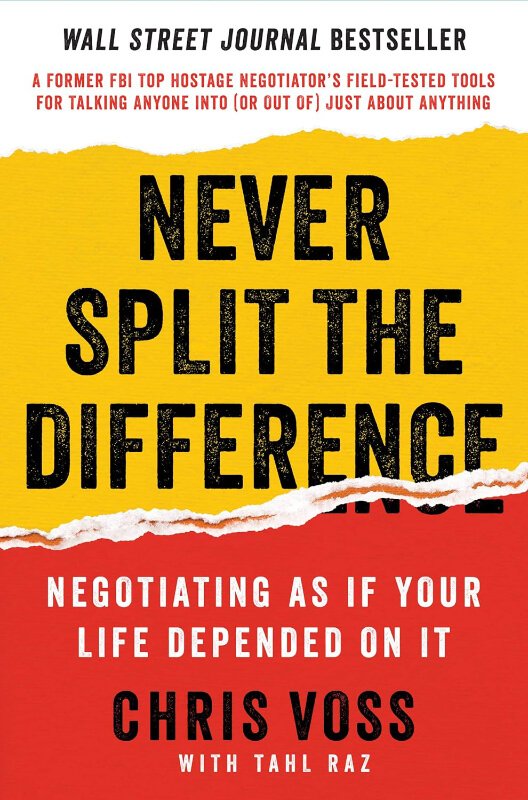
Alternative Books
Here are three excellent complementary reads that expand on different aspects of high-stakes negotiation strategies and influence:
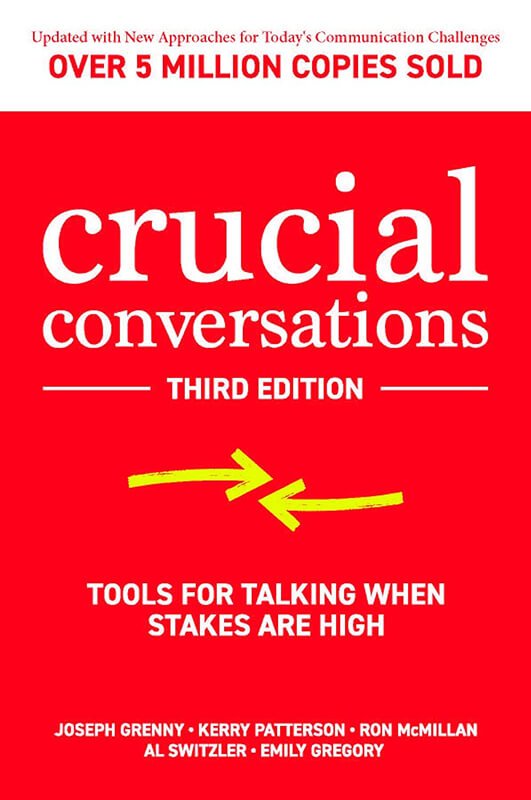
“Crucial Conversations” by Kerry Patterson et al.
A powerful guide for handling high-stakes communications and difficult conversations.
Rating: 4.6/5
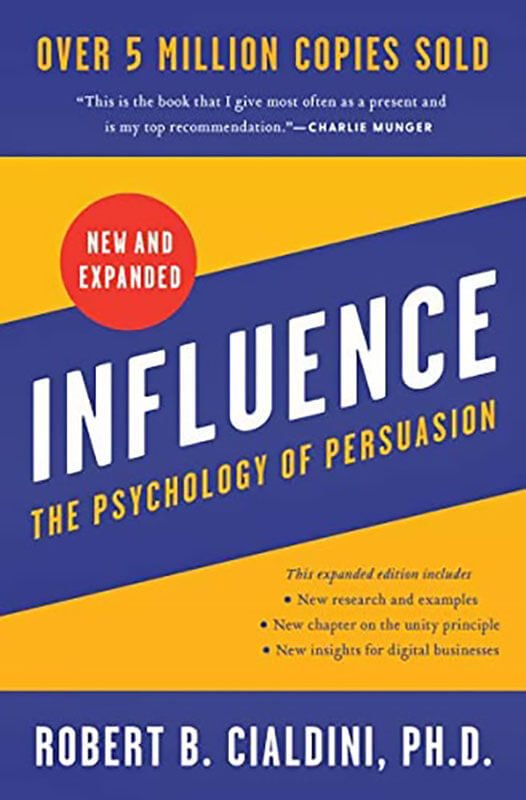
“Influence: The Psychology of Persuasion” by Robert B. Cialdini
Explores the psychology behind why people say “yes” and how to apply these principles ethically.
Rating: 4.6/5
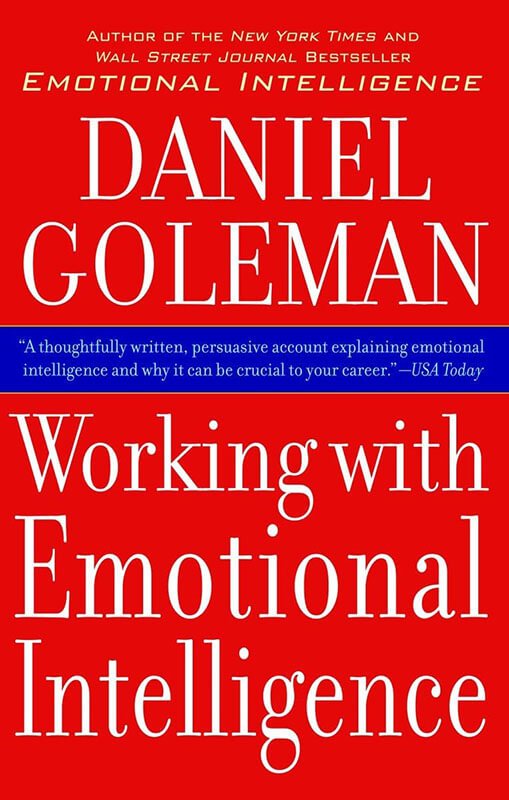
“Working with Emotional Intelligence” by Daniel Goleman
Provides deeper insight into the emotional aspects of professional relationships and communication.
Rating: 4.6/5

